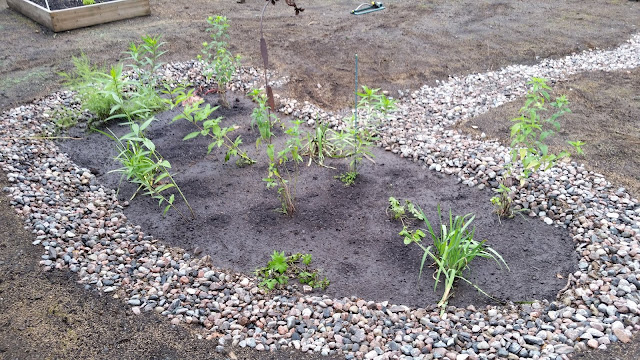What is a rain
garden?
"One of the wide variety of soil-absorption/filter systems, a
rain garden, also called as stormwater garden, is a designed depression storage
or a planted hole that allows rainwater runoff from impervious urban areas,
like roofs, driveways, walkways, parking lots, and compacted lawn areas, the
opportunity to be absorbed. The primary purpose of a rain garden is to improve
water quality in nearby bodies of water and to ensure that rainwater becomes
available for plants as groundwater rather than being sent through stormwater
drains straight out to sea."
Why are you
installing a rain garden?
We decided to create a rain garden in our yard as an
additional stormwater management feature of our property. We are planning on getting
some professional landscaping done during the Spring of 2018 so we are using
the opportunity of having workers with digging equipment to create the basin of
the rain garden. We also plan on using the flowers of our rain garden to
attract butterflies for our children’s enjoyment and pollinators for our
vegetable garden.
Aren’t you afraid of
having a pond that will attract mosquitos?
Rain gardens are not ponds. If we have sized the garden
correctly, there will be no standing water left in the basin of the garden the
day after a downpour.
Why are you blogging
about your rain garden?
When we did research about rain gardens, we found many
examples of finished gardens. However, we did not find any examples of the
entire process as the garden is dug and plants grow. We hope to use this blog
to share how our garden grows over time.
How did you choose your plants?
We had a free consultation with
our city’s botanist. She suggested hardy perennials that tolerate exposure to
water and drought conditions.
Where are you
located?
We are in the Montreal area (hardiness zone 5a/5b). The last
frost date is May 7th and the first frost date is October 7th.
Puisque vous êtes à Montréal, pourquoi ne pas écrire en français?
Nous voulons rejoindre le plus de gens possible. N'hésitez pas à écrire vos commentaires en français si vous visitez notre blogue!
Useful links










